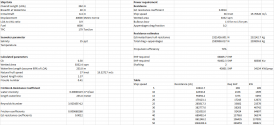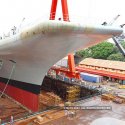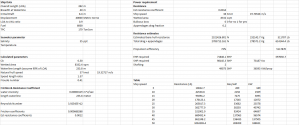Do you know what you're talking about in other hand ?
Like, i have my share in calculating speed-power requirement. This is a simple spreadsheet i developed some years ago. It's simple but it does give some reasonable result. I will never judge what i see without asking and researching more about it. Just like Radar Cross Section estimates, the devil is in detail and these details have NUMBERS which should be calculated.
Back to spreadsheet tho..
View attachment 107073
Above depicts my estimates on speed-power requirement on Vikrant. Let's use your 90% for the waterline length and 40m of waterline breadth. as you can see 38 knots requires about 91602.3 SHP While Vikrant is afaik have 110000 SHP of propulsive power. I would say such speed are perfectly reasonable although not necessarily efficient and maybe uncomfortable for crews but clearly there is a margin for Vikrant there which apparently being tested.
40 Knots however are unfeasible as it needs 137000 SHP. but 35-38 Knot and particularly with lightly loaded trial condition should be feasible. Does Vikrant will operate at that speed at all times ? No as the hull does have optimization on sustaining certain speed (e.g 25-30 Knot) and for fuel and engine reliability reason plus potential growth in the future.
Now in respect on "alarming" and sensationalism you show so far.. in the previous page we have news that the carrier can safely launch planes and landing. meaning that the phenomenon you keep clinging into only happens in certain moment. I already stated my guesses. Still i will not simply raise alarm or "Indian engineering failures" etc WITHOUT knowing properly what are the story behind it.




